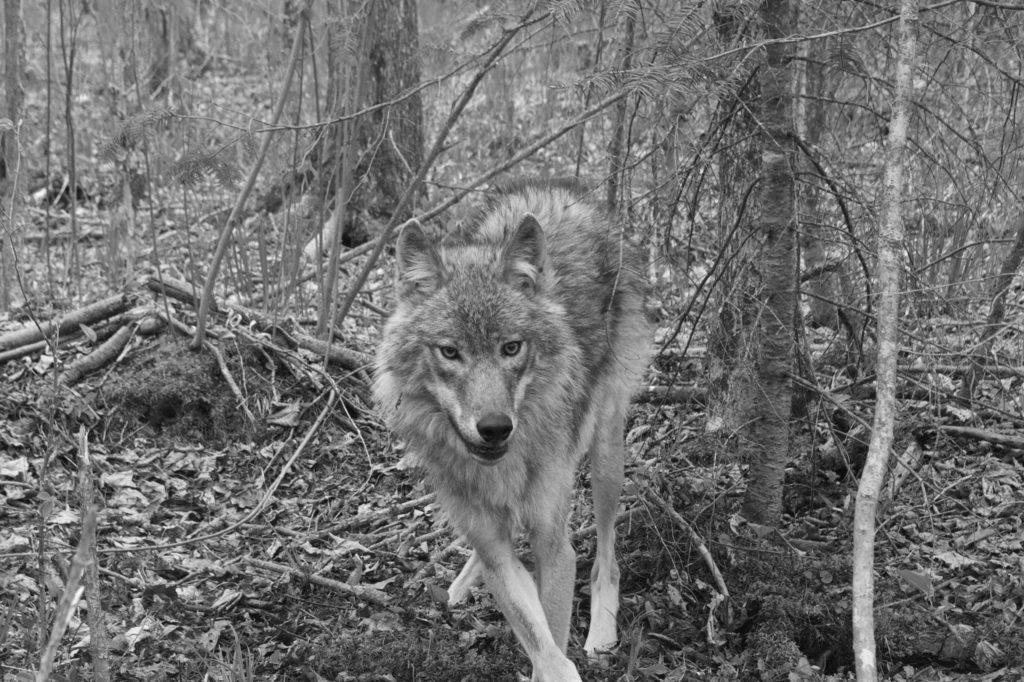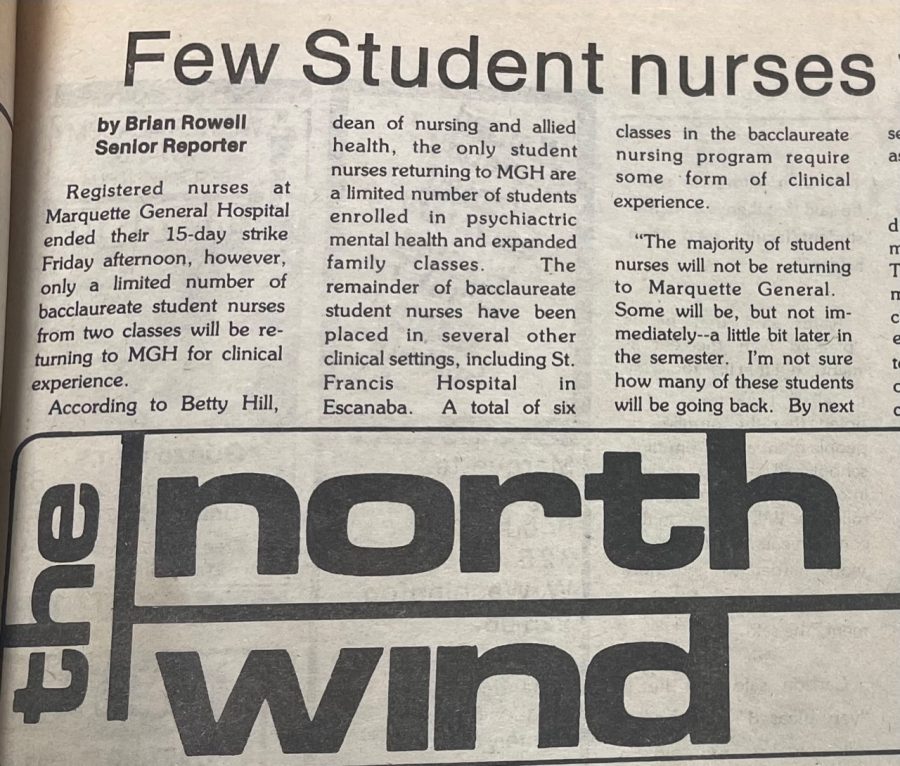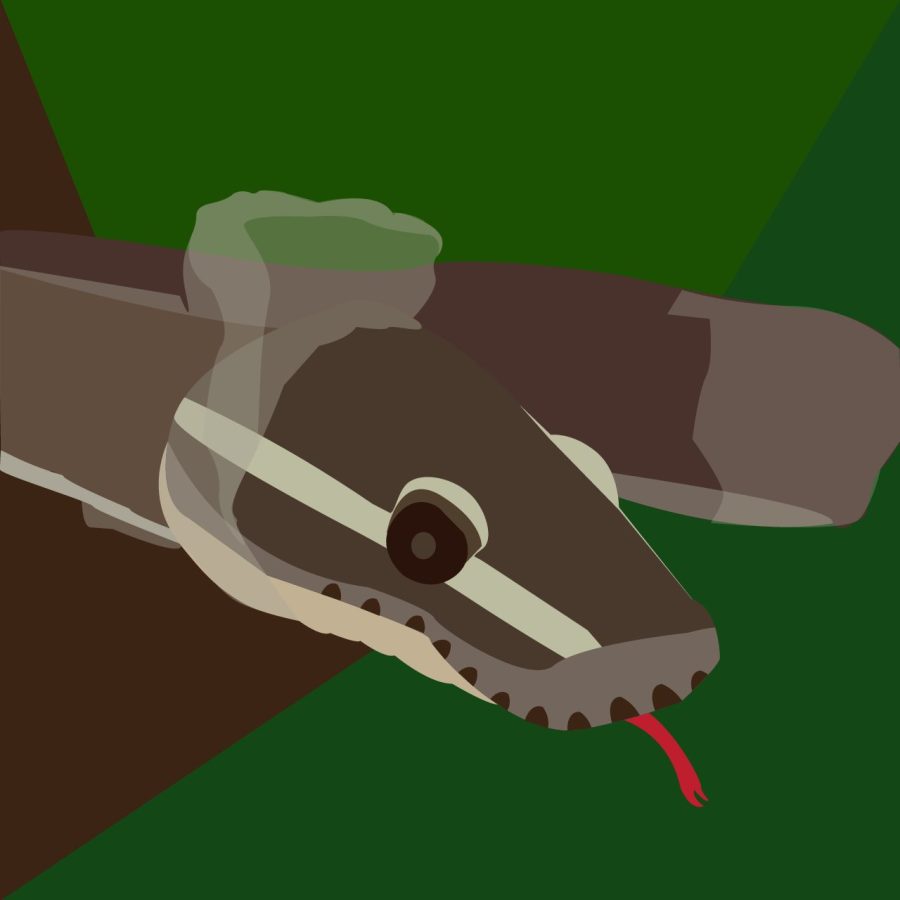An orange sun pushes through a velvet blue sky, the sunlight winking across the brisk winter water. Tom Gable, NMU biology graduate, has already checked the internet for wolf locations and began bushwhacking through the Voyageurs National Park (VNP) wilderness before the sun has made it’s trek to the top of the sky. Gable hikes up to 12 miles per day, tracking wolves and their behaviors. As part of his Ph.D research at the University of Minnesota, his project made him the first to capture on film that wolves are not the carnivorous creatures we think. This, is the Voyageurs Wolf Project.
“I spotted a wolf at the bank of the creek and watched it run in and make a big splash. Once it left the area I found fish remains, blood, guts and fish scales,” Gable said. “We raced out there and put up video cameras to get this video. We’re really excited because it’s the first documented video evidence that wolves fish.”
What Gable discovered on a hike, though, is that wolves are highly adaptable predators capable of finding unique food sources, such as freshwater fish. Most of the data came from following GPS collared wolves, and most of them spent 50 percent of their time near a creek. By collecting wolf scats, Gable also found that wolves consume a lot of blueberries in the summer months.
The project is a collaboration with the VNP in northern Minnesota and the University of Minnesota. Research started in 2015 to study the ecology of wolves but the project’s main focus is understanding predation behavior and reproductive ecology in the summer months. What makes it unique is that most wolf research is conducted in the winter, as it is easier to spot wolf tracks in the snow, Gable said.
The researchers track wolves in VNP, an area researchers call the greater voyageurs ecosystem and the area southernly adjacent to the national park, Gable said. Tracking wolves requires capturing them and injecting a sedative long enough to collar and inspect the wolf, he said.
“It’s always difficult. Wolves are very intelligent and hard to catch. We use foothold traps with rubber pads that are modified for catch and release. We get our drugs ready go in a little syringe attached to a handle 6 feet long, inject the sedative in the rump and the wolf is out in a couple of minutes,” Gable said. “We give them a drug that reverses the sedative and the wolf regains consciousness within 40 minutes. It’s the equivalent to having a bad hangover, they take a day to regain their strength.”
Over 40 percent of the park is composed of large lakes, according to the VNP website, and wolves can swim up to two miles over the span of two days. Gable and the research team seek to understand packs that territorially occupy a portion of the park in order to compare them to a pack occupying a different part of the park.
Wolves, for Gable, have always peaked his interest. Sometimes he’ll stay awake until 4:30 a.m. howling into the dusk as a part of his research to better understand them.
“My fascination [with wolves] blossomed when I was at my family’s cabin growing up on the north shore of Lake Ontario. I would see the wolf tracks, these animals were so hard to see,
and it captured my imagination,” Gable said. “I knew I wanted to study wolves but I didn’t really know what that
meant when I graduated from college.”
After completing his undergrad in biology at Hope College, Gable said he knew he wanted to do graduate work and applied to work with bats, badgers, wolves and deer. At NMU, Gable’s master’s work involved researching beaver ecology which led him to study the wolf-beaver interaction. This interaction is not nearly as socio-economically important as the wolf-deer interaction, Gable said, but it still holds a high ecological importance.
“Deer hunting drives millions of dollars and is generally going to receive more attention,” Gable said. “We’re trying to say that [the project] is important and were slowly doing that here.”
In an uncanny twist of fate, Gable said the only jobs that he was offered were with wolves.
The video that Gable raced to get when he first spotted the wolf fishing has received national attention and currently has over 421 thousand views on Facebook.
Gable explained that the wolf-beaver interaction is important because beavers are ecosystem engineers. Beavers’ actions in an ecosystem, such as building dams to create wetlands, are vital to the functioning of their habitat and are one of the biggest agents of change, he said. Thus, any predator that’s killing beavers will impact the ecosystem. If there is a higher beaver population, there’s a possibility that they might kill more deer and moose, Gable said, adding, it contributes to the already declining Minnesota moose population.
It’s known that wolves’ diets are not just carnivorous, but the discovery that they consume berries provided different opportunities for the Voyageurs Wolf Project to pursue. Gable explains that people have known that wolves are a generalist species, where they can use diverse food sources. The project will now focus on determining the extent in which wolves are consuming berries or fish. The splashing, fishing wolf that Gable observed changed the way he thought about the ecology of wolves and he is excited for the avenues this discovery will take the Voyageurs Wolf
Project.




























